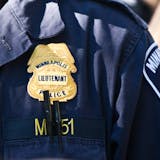About 38,000 people lost Medicaid health insurance coverage at the start of this month as Minnesota began a yearlong process to check eligibility for the roughly 1.5 million state residents who are enrolled in the public health insurance program.
Interpreting the lost coverage figure is difficult because it's likely that some are picking up health insurance from another source rather than going uninsured, Jodi Harpstead, the commissioner of the state Department of Human Services (DHS), said on Wednesday.
It's also likely that some are being disenrolled even though they still qualify for coverage — it's just that their renewals did not occur for reasons that can vary from lost paperwork to missing addresses.
Minnesota and other states have been bracing for sizable losses in Medicaid enrollment as they restart renewals that were suspended during the COVID-19 public health emergency.
Medicaid enrollment in Minnesota grew from about 1.2 million people to 1.5 million people over the past three years, and it could be that more of these new enrollees now have access to job-based benefits than was previously true with Medicaid, Harpstead said.
"So, this is either a very different deal, and it's going just as it should; or it's alarming; or it's somewhere in between and it's a little hard to put the adjective on it," she said in an interview.
"I'm not feeling so alarmed," Harpstead added. "I'm thinking that there's enough reason to believe that people may just not need Medicaid anymore — and that we're in the beginning of a very complicated process that I think will get more robust and better throughout the year."
Medicaid is the state-federal program that provides health insurance coverage for lower-income and disabled state residents. Renewals resumed this summer and will continue for roughly a year.



